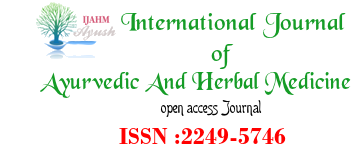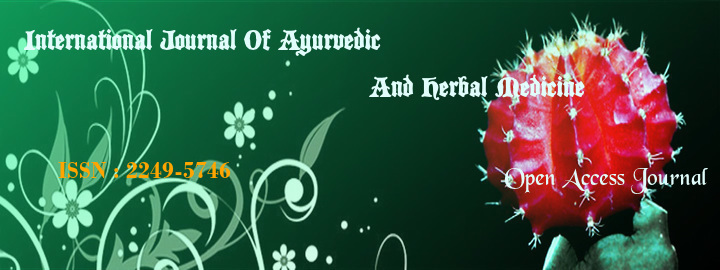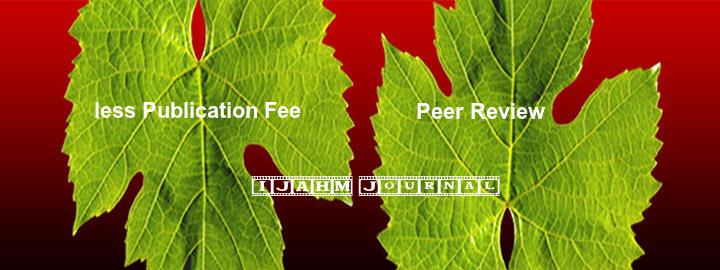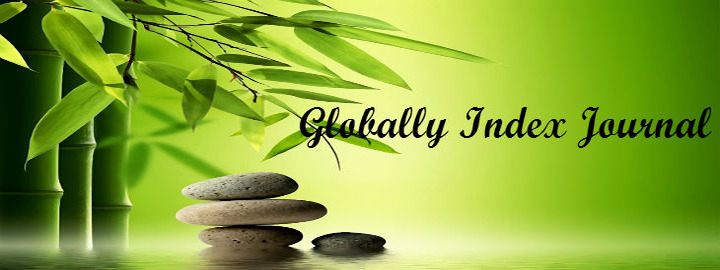


1Usha Sharma,2 Karishma , 3Dr. Pandey Reena ,4Yadevendra Yadav , 5Dr. Khem Chand Sharma
DOI : http://dx.doi.org/10.31142/ijahm/v10i4.06
1Associate Professor, (P.G Department of Rasa Shastra & Bhaishjya Kalpana)
2MD Scholar, (P.G Department of Rasa Shastra & Bhaishjya Kalpana)
3Professor (P.G Department of Kaumarbhritya)
4Assistant professor, (P.G Department of Rasa Shastra & Bhaishjya Kalpana)
5Professor and H.O.D., (P.G Department of Rasa Shastra & Bhaishjya Kalpana)
Uttarakhand Ayurved University, Rishikul Campus, Haridwar, India 249401.
Corresponding Author: Karishma
MD Scholar, P.G Department of RSBK, Uttarakhand Ayurved University, Rishikul Campus, Haridwar.
ABSTRACT:
According to Ayurveda, Kasa (cough) is an independent disease. The excellency of Ayurveda over other medical sciences is that it had not only mentioned ‘Kasa’ as a symptom in various diseases but also described it as an independent Vyadhi with its separate etiopathogenesis, symptoms, signs, types and treatment. Kasa is one of the Pranavaha Srotodusti Janita Vyadhi, i.e. disease of the respiratory tract, which hampers the normal lifestyle. Kaphaja Kasa is dominated by Kapha and Vatadushti. Shringyadi Leha is a formulation mentioned in the textbook of Chakradatta in Balrog adhyaya. It contains the most potent ingredients namely Karkatshringi (Pistacia integerrima), Ativisha (Aconitum heterophyllum wall), and Musta (Cyperus rotundus) and taken with Honey which has proven anti-microbial, anti-inflammatory and immunomodulatory properties and adding to the potency with Madhu.
KEYWORDS: Kasa, Karkatshringi, Ativisha, Musta, Chakradatta, Shringyadi Leha.
REFERENCES:
- Agnivesha, Charaka Samhitha, revised by Charaka and Dridabala with Ayurveda dipika commentary of Chakrapanidatta, editor by Yadavji Trikamjiacharya, Chikithsasthana, ed.2013, Chaukamba Sanskritsansthan, Varanasi, 2013:540.
- Yadav Trikamji Acharya ed. Charaka Samhita by Agnivesha revised by Charaka and Dridhbala with the Ayurveda Deepika commentary of Chakrapanidatta; Chikitsa Sthana, Choukhambha Sanskrit Sansthana, 18/8, reprint ed, P-540.
- Shashtri Ambikadutta ed. Sushruta Samhita of Maharshi Sushruta with Ayurveda Tattva Sandipika, Part 2nd, Uttar Tantra, Chaukhambha Sanskrit Sansthana, reprint ed. 52/8; P384.
- Murthy K.R. ed. Astanga Hridaya vol 2nd, Nidana Sthana, 3/12, Krishnadas Academy Varanasi, 2nd ed., P-29.
- Y., ed Madhava Nidana of Sri Madhavakara with Madhukosha Sanskrit Commentary, Part-I, 11/2-5, Chaukhambha Sanskrit Sansthan, reprint ed-1994,P-303308.
- Jadhavji Trikamji Acharya, Charaka samhita, Varanasi, Chaukhambha Sanskrit Sansthan ; 2011, 433p . 6
- JA Innes, PT Red, Davidson SS, Respiratory disease, Davidson’s Principle and Practice of Medicines, Nicolas AB, Nicki RC, Brian RW, editors, 20th ed. Philadelphia: Churchill Livingstone Elsevier, 2006; 657.
- Sri chakpanidatta, Chakradatta,with the vaidayaprabha hindi commentary, by dr. indradeva tripathi, chap 67 slok no 27, published by Chaukhambha Sanskrit Sansthana, Varanasi, reprint 2005 page no 396.
- Sri Bhavmishra, Bhavprakash Nighantu Commentary By Prof. K.C. Chunekar, Chaukamba Bharti Academy, Varanasi Mentioned In Haritakyadi Varg, Slok No 178-179, Reprint 2005, Page No 98-99.
- Sri Bhavmishra, Bhavprakash Nighantu, Commentary By Prof. K.C. Chunekar, Chaukamba Bharti Academy, Varanasi, Mentioned In Karpuradi Varg, Slok No12-14, Reprint 2005, Page No 232-233.
- Sri Bhavmishra, Bhavprakash Nighantu Commentary By Prof. K.C. Chunekar, Chaukamba Bharti Academy, Varanasi Mentioned In Haritakyadi Varg, Slok No 213-214, Reprint 2005, Page No 126-127.
- Sri Bhavmishra, Bhavprakash Nighantu Commentary By Prof. K.C. Chunekar, Chaukamba Bharti Academy, Varanasi Mentioned In Madhu Varg, Slok No 1-4, Reprint 2005, Page No 772.
- The Ayurvedic Pharmacopoeia of India, Part I, Vol. 1 & 6, First edition.
- Ansari S.H., Ali.M., Analgesic and anti-inflammatory activity of tetracyclic triterpenoids isolated from P.integerrima galls, Fitoterapia, 1996; 67(2): 103-105
- Vikram, Aconitum heterophyllum (ativisha) in Ayurveda, Ancient Science of life Vol. No XVI 2 Oct 1996, Page 166 -171.
- Bhavprakash- shree bramhashankar mishra shastri. Chaukhamba Sanskrit bhavan.
- Loveridge J. The chemistry of Bees. 2001. Available from:http://www.chmbrisac.uk/webprojects2001/loveridge/index-page3.html.
- Oshi Uttara P and Mishra SH, In vitro antioxidant activity of galls of Pistacia integerrima, Pharmacologyonline, 2009; 2: 763-768.
- L. Ramachandra, In-vitro anti-microbial activity of pistacia integerrima leaf gall extracts http://www.pharmacophorejournal.com) 2010, Vol. 1 (2), 149-154. ISSN 2229 – 5402.
- Adusumalli, P.Madan Ranjit, and M. SankaranarayanHarish, “Antiasthmatic activity of aqueous extract of Pistacia integerrima galls,” International Journal of Pharmacy and Pharmaceutical Sciences, 2013; 5(2): 116–121.
- Kaur Barinder A review on gall karkatshringi, Journal of Medicinal Plants Research, Vol. 9(21), pp. 636-640.
- Nidhi Srivastava, In vitro anti-microbial activity of aerial parts extracts of Aconitum heterophyllum Wall. ex Royle, Indian Journal of Natural Products and Resources Vol. 2(4), December 2011, pp. 504-507.
- Manzoor Ahmad, Norditerpenoid alkaloids from the roots of Aconitum heterophyllum Wall with anti-bacterial activity, Journal of Enzyme Inhibition and Medicinal Chemistry, 23:6, 1018-1022.
- Yoirentomba Meetei Sinam, Anti-bacterial property of Aconitum heterophyllum root alkaloid, International Journal of Advanced Research (2014), Volume 2, Issue 7, 839-844.
- Surendra Kumar Sharma, Ajay Pal Singh, Anti-microbial investigations on rhizomes of Cyperus rotundus Linn., Der Pharmacia Lettre, 2011; 3(3): 427-431.
- Jigna Parekh, In-vitro Antimicrobial Activities of Extracts of Cyperus rotundus, African Journal of Biomedical Research, Vol. 9 (2006); 89 -93.
- soumaya kilani chemical composition, anti-bacterial and antimutagenic activities of essential oil from cyperus rotundus, journal of essential oil research volume 17, 2005-Issue 6.
- Mansoor ahmad, analgesic, anti-microbial and cytotoxic effect of cyperus rotundus ethanol extract, Pakistan Journal of Pharmacology Vol.29, No.2, July 2012, pp.7-13.
- Sri Ranjani Sivapalan Medicinal uses and Pharmacological activities of Cyperus rotundus International Journal of Scientific and Research Publications, Volume 3, Issue 5, May 2013 ISSN 2250-3153.
- Farhan Essaa Abdullah, Kiran Afab, Rabia Khanum and Sidrah Sohail Khan; Anti-bacterial Activity of Honey Against Bacteria Isolated from Respiratory Tract Infections, Journal of the Dow University of Health Sciences Karachi 2012, Vol. 6 (3): 95-99.
- Shadkam MN, Mozaffari-Khosravi H, Mozayan MR; A comparison of the effect of Honey, dextromethorphan, and diphenhydramine on nightly cough and sleep quality in children and their parents; J Altern Complement Med. 2010 Jul;16(7):787-93.
- Pourahmad and Sobhanian, 2008); Annie Knight; The therapeutic effects of Honey, The Plymouth Student Scientist, 2013, 6, (1), 376-385.
- Montra Srisayam, Antimicrobial and antioxidant properties of honeys produced by Apis mellifera, Journal of ApiProduct and ApiMedical Science 2 (2010) (2): 77 – 83.
- Harrison’s Principle of Internal Medicine-vol.I 16th, McGraw Hill Publication USA2005, 242th chap., 1547pp.
- Shastri P.T. kashinath, Agnivesha, Charaka Samhita, Chikitsa sthana; Chaukambha publication, varanasi Edition reprint 2006 Hikka Shwaschikitsa: Chapter 17, Verse 148; p.452.
- Tripathy K.D. 5th ed. New Delhi: Jaypee Brothers; 2003. Essentials of Medical Pharmacology, 198–209.
- Sharma P.V., Dravyaguna-Vijnana, Varanasi: Chaukhambha Bharati Academy, 2011; I (341): 116-122.
- Saxena, R. C., Punhani, K. C., Palit, T. K., Singh, N. and Bhargava, K. P., Preliminary report on The Anti-inflammatory activity of Cyperus rotundus, Indian J Pharmacol, 1971; 3: 9.
- Sundaram, M.S.; Sivakumar, T.; Balamurugan, G. Anti-inflammatory effect of Cyperusrotundus Linn. Leaves on acute and subacute inflammation in experimental rat models. Biomedicine, 2008; 28: 302304.
- Soltan MM, Zaki AK, Antiviral screening of forty-two Egyptian medicinal plants, J Ethnopharmacol, 2009 Oct 29; 126(1): 102-7.
Mandal Manisha Deb Honey: its medicinal property and anti-bacterial activity, Asian Pac J Trop Biomed 2011; 1(2): 154-160.
index






















